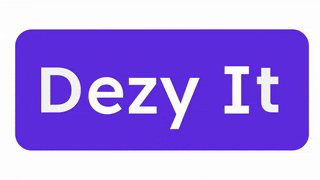New York’s Leading Edge: A Hospital’s Success Story with AI-Powered Administration
- purvasha
- Dec 17, 2024
- 3 min read
The healthcare sector is facing immense challenges, from managing administrative tasks to improving patient experiences. NewYork-Presbyterian Hospital (NYP), one of the most prestigious healthcare institutions in the country, has successfully implemented AI-powered solutions to streamline administrative processes. By embracing a thoughtful and strategic approach to AI, NYP is setting a benchmark for other hospitals and clinics.
In this blog, we explore how New York-Presbyterian Hospital’s innovative use of AI has transformed administrative work, reduced wait times, and elevated operational efficiency.

The Challenge of Growing Administrative Burden
Hospitals and clinics across the United States are dealing with rising administrative workloads. Staff are increasingly burdened with appointment scheduling, medical billing, insurance claims, and managing patient records. These tasks, though essential, consume valuable time that could otherwise be focused on patient care.
For large healthcare systems like NYP, the challenge was twofold:
Reducing the time spent on administrative work.
Improving the patient experience without compromising efficiency.
NYP recognized that a modern solution was necessary to meet these demands.
How NewYork-Presbyterian Integrated AI to Drive Efficiency
NewYork-Presbyterian adopted a measured approach to AI integration rather than rushing implementation. By carefully assessing its unique needs and understanding the power of AI tools, NYP ensured that AI could transform administrative functions while maintaining a focus on patient care.
Key areas where AI was implemented:
1. Appointment Scheduling Optimization
AI-powered scheduling tools have significantly reduced wait times by streamlining how appointments are managed. Patients now experience faster booking times, and administrative staff can prioritize urgent cases seamlessly.
2. Automating Medical Billing
Medical billing is a tedious and error-prone process. NYP leveraged AI algorithms to ensure accurate billing and reduce processing time, leading to fewer errors and quicker reimbursements for both the hospital and patients.
3. EHR and Patient Record Management
Integrating AI with electronic health records (EHR) has improved data access, allowing staff to locate, manage, and share patient records instantly. Automation has removed redundancy, saving countless hours of manual input work.
4. Enhancing Insurance Claim Processing
AI tools have streamlined the process of managing insurance claims, resulting in faster approvals and reduced delays for patients awaiting care.
Benefits Achieved by NYP Through AI Integration
The thoughtful adoption of AI has resulted in measurable improvements across NYP's operations:
1. Reduced Wait Times
AI has optimized scheduling and resource allocation, leading to reduced patient wait times—a common frustration in healthcare systems. This has significantly improved patient flow and overall satisfaction.
2. Improved Patient Satisfaction
With administrative tasks becoming seamless, patients experience quicker services, faster billing, and smoother transitions between departments. This has elevated NYP’s patient satisfaction scores.
3. Boosted Operational Efficiency
By automating routine tasks, NYP has freed up administrative staff to focus on critical areas, like patient support and care delivery. This has increased productivity and morale among hospital employees.
4. Cost Savings
AI solutions have reduced labor-intensive tasks and minimized human errors, resulting in substantial cost savings for the hospital. NYP can now redirect resources toward improving patient care facilities.
Why NYP’s Success is a Blueprint for Other Hospitals
The success story of NewYork-Presbyterian demonstrates that AI can be a game-changer in the healthcare industry when implemented strategically. Hospitals and clinics of all sizes can learn from NYP’s approach to AI adoption:
Assess organizational needs before implementing AI tools.
Focus on improving operational bottlenecks (e.g., billing, scheduling).
Prioritize the patient experience in all AI applications.
This measured approach ensures that hospitals can gain maximum benefits without overwhelming their staff or disrupting existing workflows.
Future Prospects: AI in Healthcare Administration
NewYork-Presbyterian’s success is only the beginning. The potential for AI in healthcare administration is limitless, with tools expected to improve further through advancements in machine learning and natural language processing. From predictive analytics to virtual assistants, AI will continue to revolutionize administrative efficiency in hospitals and clinics.
Conclusion
NewYork-Presbyterian Hospital has proven that AI, when implemented thoughtfully, can revolutionize healthcare administration. By reducing wait times, improving operational efficiency, and enhancing the patient experience, NYP is leading the charge in AI-driven innovation.
As clinic owners, managers, and investors consider the future of healthcare administration, NewYork-Presbyterian’s success provides a clear and actionable model for integrating AI.
For healthcare providers looking to reduce administrative burdens while delivering top-notch patient care, the time to embrace AI is now.




